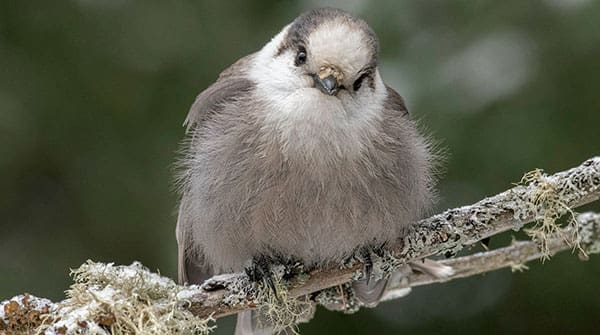How early nesting species of birds adapt and thrive in challenging spring conditions
 I love the spring for so many reasons – a revitalized environment, a relief from the dreary winter days, spring song, new life, a fresh start, warmth and a great excuse to get back outside and enjoy nature’s bounty. Sounds prosaic, perhaps, but for me, it is the reality of life. After all the years I’ve been around, I never tire of spring.
I love the spring for so many reasons – a revitalized environment, a relief from the dreary winter days, spring song, new life, a fresh start, warmth and a great excuse to get back outside and enjoy nature’s bounty. Sounds prosaic, perhaps, but for me, it is the reality of life. After all the years I’ve been around, I never tire of spring.
But it can be a tough time for birds, other animals and even plants. Mid to late spring frosts can damage buds and flowers, while insects, essential for many early migrants, may be killed or driven to cover. So why come back and nest so early?
Migrants time their travels by innate abilities (i.e. they are born with this knowledge) keyed to natural events (e.g. insect hatches or ripening berries) such that, on average, they can survive the unpredictable spring weather. The survival mechanisms are varied and include reverse migration (where they head back south if conditions aren’t favourable), choosing alternate foods (e.g. shifting from insects to seeds or berries) or waiting it out (this can be very dangerous!)
 Canada Jay |
| Related Stories |
| Tips for setting up your bird feeders
|
| How do birds stay warm in winter?
|
| Canada Jay is the best choice to be our national bird
|
But some species put it all on the line and start nesting way before we think it is a good idea. Many owls begin in late January or early February, and Canada Jays notoriously nest when everything is still frozen in the north in February. But why?
Well, they gain a competitive advantage and rely on behaviours that other species might not utilize. For example, Canada Jays cache food for weeks before the nesting season to ensure that, if times get tough, the nestlings have a fighting chance. Owls hunt all winter, so providing food for nestlings isn’t generally a problem.
Late last March, I was walking at a local park and came upon an unattended large nest. Clearly, it was some type of waterfowl, but which one? It was too big for a duck and fell within the size range of Canada Geese or Trumpeter Swans.
I watched the nest from about 250 meters away as a pair of Canada Geese stood nearby and preened and fed, calmly and seemingly indifferent to the nearby eggs. Finally, after about 45 minutes, a Canada Goose slowly approached the nest and settled in.
Now, this in itself isn’t all that startling, but what surprised me was how long the nest was exposed to the elements. It was constructed on the ground on a berm directly in the path of strong northwest winds. The air temperature was about 4C, so it was definitely unpleasant, at least for me. The nest had been empty for more than 3/4 hour as I hadn’t disturbed the birds or flushed them off the nest when I first found it.
So how can the eggs survive in near-freezing temperatures? Many species have a form of antifreeze in the egg fluids that will not withstand total freezing temperatures but certainly make the eggs cold-tolerant. Arctic and Antarctic species are most note-worthy in this ability, as are many early nesting species.
The difference between the time when the egg is still viable and when the balance is tipped is critical. Again, only the innate knowledge that these species possess can tell them when to react – get back to the nest now, or it will fail! This is not learned behaviour and can only come from knowledge born of genetic attributes.
Other species that get tricked by nature (e.g. an unseasonably warm spring) will assuredly fail if the conditions change unfavourably. Their only recourse is to renest or, if possible, wait until next year to try again – both risky alternatives.
So don’t be too surprised if you see lots of activity out there, be it birds or mammals … let’s hope that Mother Nature is kind this year! The spectacle has begun anew – don’t miss it!
Geoff Carpentier is a published author, expedition guide and environmental consultant.
For interview requests, click here.
The opinions expressed by our columnists and contributors are theirs alone and do not inherently or expressly reflect the views of our publication.
© Troy Media
Troy Media is an editorial content provider to media outlets and its own hosted community news outlets across Canada.

